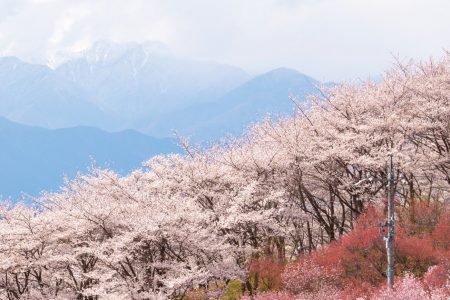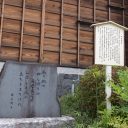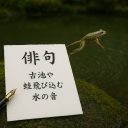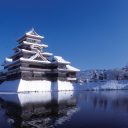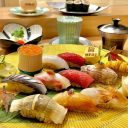
Koromo-gae literally means “changing clothes” – koromo being “clothes,” gae>kae>kaeru being “to change.” It means changing clothes in accordance with the change of seasons. It sometimes means the change of places to store the clothes/wardrobes as a result of changing clothes. In a narrow sense, koromo-gae refers to the change of uniforms of pupils /students, employees of private enterprises and some official duty personnel of institutions such as police and fire stations according to the change of seasons.
In most parts of Japan, on the 1st day of June, they change clothes to align with the warmer weather such as from long sleeve shirts to short sleeve shirts and the colour of uniforms from dark colours to light colours. Then, on the 1st day of October, they do the opposite to align with the cooler weather. In some areas, there is some leeway or transition period, e.g., 2 weeks to 1 month, to shift to clothes for the new season.
Varied Periods
Japan is a small country but has a few climate regions. Thus, there is somevariance in the period of Koromo-gae between the regions. For example, in Hokkaidō,where the climate is relatively cool, they adopt Koromo-gae with half a month delay, i.e.,from the 15th of June to the 15th of September. Another example is in the south-westregion where the climate is relatively warm. People exercise Koromo-gae from the 1st ofMay to the 1st of November, in other words, they wear summer clothes longer than otherregions by 2 months.
History
This custom originally came from China during the early part of the Heian (平安) period (794-1191) and became an important imperial event. In those days, it was the norm to change summer and winter clothes on the 1st of April and the 1st of October in the lunar calendar. This custom came to be called Kōi (更衣) [changing clothes]. Interestingly, this word is still used nowadays as in Kōi-shitsu (更衣室), meaning a locker room, fitting room or dressing room.
However, the official name for a lady-in-waiting who was in charge of changing clothes for the Emperor also became Kōi (更衣), so this custom came to be called Koromo-gae among the general public.
In the Kamakura (鎌倉) period (1192-1333), Kōi started to include the seasonal change of not only clothes but also furnishings such as tables and chairs, decorations and cutlery.
In the Edo (江戸) period (1603-1868), Japanese society generally became stable and peaceful and people started to enjoy wearing different kinds of clothes. The Edo regime officially stipulated that those who come to the workplace, i.e., castle, the Samurai (侍) class, had to change clothes 4 times a year in the lunar calendar. They wore Awase (袷) [lined kimono] from the 1st of April to the 4th of May; Katabira (帷子) [single-layer kimono] from the 5th of May to the end of August; Awase (袷) again from the 1st of September to the 8th of September; and Wataire (綿入れ) [padded garment] from the9th of September to the end of March of the following year.
There were no strict customs among peasants, craftsmen and merchants, but they changed clothes to suit their jobs and climates. Not only the women in the imperial court, but also wives and daughters of the Samurai, peasants, craftsmen and merchants all enjoyed different outfits in accordance with the climates in their regions as more sophisticated clothes were manufactured during the Edo period.
In the Meiji (明治) period (1868-1912), the Meiji government introduced the western type of clothes to the public servants, police and military personnel as uniforms. The government also adopted the solar calendar from the 1st of January 1873 and stipulated that summer clothes be worn from the 1st of June to the 30th of September and winter clothes from the 1st of October to the 31st of May in the following year. This trend spread to student uniforms and consequently to the general public.
Koromo-gae nowadays

In 2005, the Ministry of Environment, led by the then Minister, Yuriko Koike (小池百合子), now the Governor of Tokyo, appealed to all workplaces to set the air-conditioner at 28°C and to do away with a suit and tie for the comfort of the workers in summer months. This proposal was called Kūru-bizu (クールビズ) [Cool Business attire] and it was welcomed by workers as an excellent means of Koromo-gae. In addition to the traditional Koromo-gae, you may notice when you visit Japan, most people tend to change their clothes around the same time of the year.
This is in stark contrast to Australia where people wear whatever they feel comfortable in all through the year. For example, you come across some who are wearing shorts and T-shirts on the same day that others wear long trousers and long-sleeved shirts or even a jumper.
Author
Shunichi Ikeda
BAS Hons (ANU)
MEd (SUNY at Buffalo)
Visiting Fellow, ANU College of Asia and the Pacific

